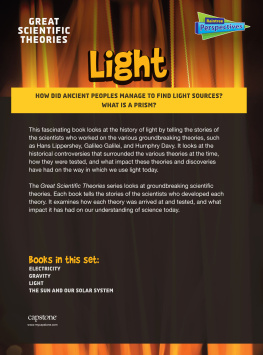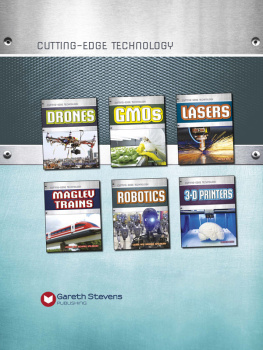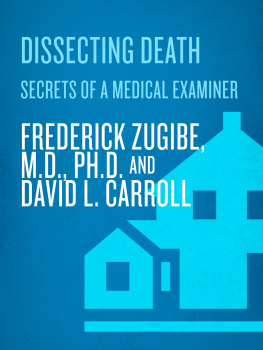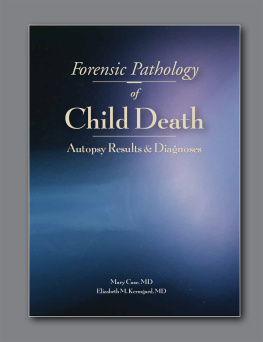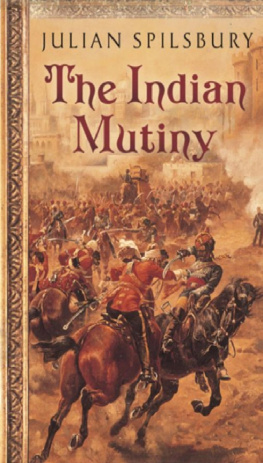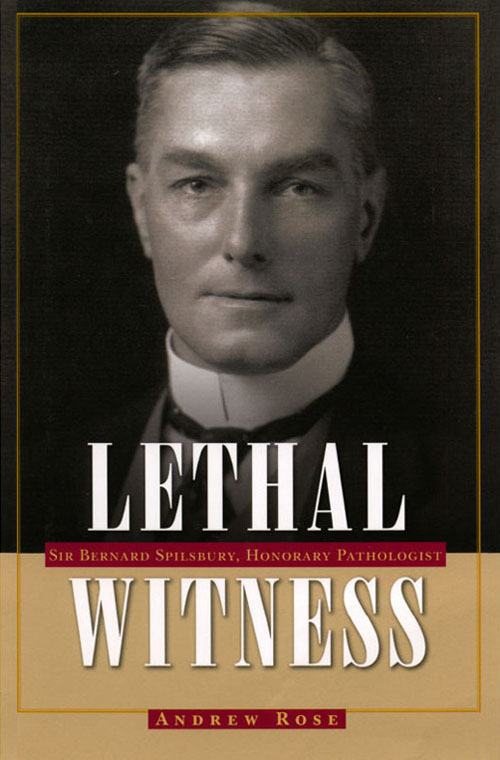LETHAL
WITNESS
TRUE CRIME HISTORY SERIES
Twilight of Innocence: The Disappearance of Beverly Potts
J AMES J ESSEN B ADAL
Tracks to Murder
J ONATHAN G OODMAN
Terrorism for Self-Glorification: The Herostratos Syndrome
A LBERT B OROWITZ
Ripperology: A Study of the Worlds First Serial Killer and a Literary Phenomenon
R OBIN O DELL
The Good-bye Door: The Incredible True Story of Americas First Female Serial Killer to Die in the Chair
D IANA B RITT F RANKLIN
Murder on Several Occasions
J ONATHAN G OODMAN
The Murder of Mary Bean and Other Stories
E LIZABETH A. D E W OLFE
Lethal Witness: Sir Bernard Spilsbury, Honorary Pathologist
A NDREW R OSE
LETHAL
WITNESS
S IR B ERNARD S PILSBURY
H ONORARY P ATHOLOGIST
A NDREW R OSE
The Kent State University Press
Kent, Ohio
Andrew Rose 2007
All rights reserved
Andrew Rose has asserted the moral right to be identified as the author of this work.
Library of Congress Catalog Card Number 2009006770
ISBN 978-1-60635-019-5
Manufactured in the United States of America
Published in the United States of America in 2009 by The Kent State University Press Previously published in the United Kingdom by Sutton Publishing
Library of Congress Cataloging-in-Publication Data
Rose, Andrew.
Lethal witness : Sir Bernard Spilsbury honorary pathologist / Andrew Rose.
p. cm. (True crime history series)
Originally published: Stroud : Sutton Pub., 2007.
Includes bibliographical references and index.
ISBN 978-1-60635-019-5 (pbk. : alk. paper)
1. Spilsbury, Bernard Henry, Sir, 1877-1947
2. Forensic pathologistsGreat BritainBiography.
3. Medical examiners (Law)Great BritainBiography. I. Title.
RA1025.S6R67 2009
614.10941dc22
2009006770
British Library Cataloging-in-Publication data are available.
13 12 11 10 09 5 4 3 2 1
To the memory of a surgeon,
Dr William Fiddes
of Belhelvie, Aberdeenshire,
who died on 15 April 1847, the result of septicaemia
contracted while performing a post-mortem
Contents
Acknowledgements
P rofessor Bernard Knight CBE, Emeritus Professor of Forensic Pathology, University of Wales College of Medicine, formerly Consultant Forensic Pathologist to the Home Office, and Barrister-at-Law, has been of immeasurable help for more than a decade. As the project for a life of Spilsbury has gradually taken shape, Professor Knight has always been ready, often at short notice, with help and advice on the more celebrated and difficult cases in which Spilsbury was involved. Professor Knight also lent me Spilsburys 1944 engagement diary and address book, together with Alan Spilsburys pocket diary for 1945, both of which shed valuable light on Spilsburys last years.
I am most grateful to the late Rt Hon Sir Frederick Lawton QC, His Honour Judge Alan King-Hamilton QC, Dr Hazel Baker, Joy Cotton (Lady Spilsburys niece), Dr David Foster, Dr Jean Gavin and Molly Lefebure for their personal recollections of Spilsbury. Dr Foster also made available to me records of The Organon, an academic dining club of which Spilsbury was a member.
Lord Hutchinson of Lullington QC (Jeremy Hutchinson) both wrote and spoke to me about aspects of Spilsburys life, notably in relation to the Fox case. Mrs Susan Kittermaster and Mrs Daphne Torrie gave me useful information about the late Mrs Hilda Bainbridge. Dr Lewis Gavin gave me his memories of Professor Sir Sydney Smith and of Dr Gerald Roche Lynch, the Home Office analyst. The late Sir Geoffrey Wilson told me of his experiences as marshal to Mr Justice Rigby Swift, who presided at several trials in which Spilsbury gave evidence for the Crown. I am grateful to Dr Ian Wilson for family recollections of Spilsburys work on the Tarrant Keyneston shooting mystery.
Sir Max Hastings allowed me to use material from his fathers book The Other Mr Churchill (Harrap 1961), the biography of Robert Churchill, the gunsmith, who collaborated with Spilsbury in several murder trials. My thanks are due to Dr C.P.W. Willcox and Dr H.N.A. Willcox for allowing me to draw on material in The Detective-Physician, the biography of Sir William Willcox written by his son, the late Dr Philip Willcox. Bryan Senior, the distinguished artist and residuary legatee of Dick Spilsbury, gave me a number of photographs of Spilsbury family members, and I am most grateful to him for allowing me to quote from two letters in his possession written by Spilsbury during the Second World War. The late Professor Richard Cobb and Mrs Margaret Cobb also spoke to me about Dick Spilsbury. Dr Robin Darwall-Smith, Archivist of Magdalen College, Oxford, allowed me to peruse documentation held in the college archives relevant to Spilsburys academic record as an undergraduate. Dr Janet Jenkins supplied me with extracts from a diary describing conditions leading up to the air raid that killed Peter Spilsbury in September 1940.
Many thanks are also due to Kevin Brown, Trust Archivist and Alexander Fleming Museum Curator at St Marys NHS Trust, Paddington, who permitted me to see archive material relating to Spilsbury held in his collection and who, with his unique knowledge of the hospitals history, provided me with valuable additional information about the background to Spilsburys career at St Marys.
Jonathan Evans, Archivist of the Royal London Hospital Archives and Museum, showed me material on the Crippen case, including a number of slides prepared by Spilsbury and other significant items. Diana Brahams, Secretary of the Medico-Legal Society, allowed me access to the societys annual records. I am grateful to Ms Kate Smith, of the Royal Society of Chemistry Library and Information Centre, for detail relating to James Spilsburys fellowship of the Chemical Society.
My thanks are due to Mrs Elspeth Griffiths, Archivist at Sedbergh School, for information about Dick Spilsbury and in relation to Spilsburys unsuccessful application to join the Methodist ministry. Gratitude also extends to John Bever, volunteer archivist of Manchester Grammar School, and to Helen Sender of University College School, for their assistance in relation to Spilsburys attendance at their respective schools. Mrs K.A. Jowett, Assistant Librarian at the Library and Museum of the United Grand Lodge of England, sent me details of Spilsburys membership of four Masonic lodges.
I am most grateful to Linda Steward for sending me a valuable collection of copy documents, including family charts, school records and newspaper extracts, relating to the life of Sydney Fox. Sir John Leslie Bt gave me important family recollections of the pocket cherub. David J. Tolley has been an assiduous and most helpful correspondent, particularly in relation to Leamington Spa, Spilsburys birthplace, and in relation to firearms issues.
Dr Gordon Ostlere (Richard Gordon) sent me a copy of his essay on Spilsbury in Great Medical Disasters. Jonathan Goodman, secretary of Our Society (of which Spilsbury was once a member), has been of inestimable help and drew my attention to the dubious career of Dr Massiah, linked to Brighton Trunk Murder Number One. My thanks are due to Robin Odell for lending me a file of press and personal photographs of Spilsbury and for allowing me to use material from the surviving case cards, placed on loan to the Galleries of Justice in Nottingham, which helpfully supplied me with photocopies. Richard Whittington-Egan, a good friend for a quarter of a century, has been a mine of information about Spilsburys celebrated cases. Wilfred Gregg, author and member of




